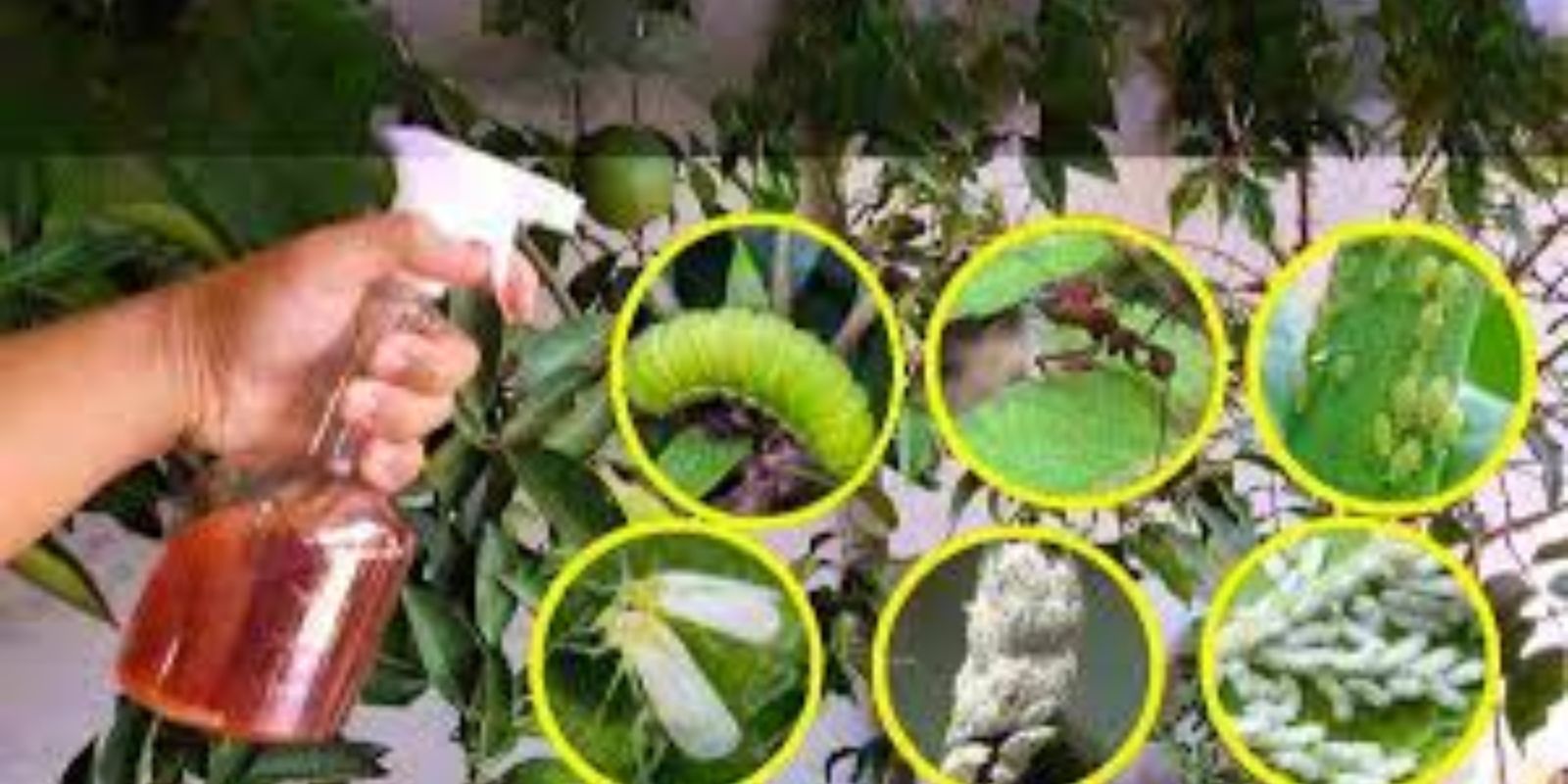Introduction
Managing pests in your garden can be a daunting task, especially when dealing with pesky caterpillars, bedbugs, ants, and whiteflies. These invaders can wreak havoc on your plants and disrupt the balance of your garden ecosystem. Fortunately, you don’t need to resort to expensive or harsh chemicals to tackle these pests. With just four common kitchen ingredients, you can create a powerful homemade liquid that effectively eliminates these nuisances. This article will guide you through a simple recipe and provide tips on how to apply it for maximum results.
The Ingredients
1. Garlic: Known for its strong smell and natural pest-repellent properties, garlic is a powerful ingredient in your pest control arsenal. Its sulfur compounds deter a wide range of pests and can help prevent them from infesting your garden.
2. Dish Soap: The dish soap acts as a surfactant, allowing the liquid to adhere to plant surfaces and pests more effectively. It also helps break down the protective waxy coatings of insects, making them more vulnerable to the other ingredients.
3. Cayenne Pepper: This spicy ingredient adds an extra layer of deterrence. The heat from cayenne pepper irritates pests and can drive them away from your plants. It’s particularly effective against ants and other small insects.
4. Water: Water is the base of the solution, helping to dilute the concentrated ingredients and making the mixture easier to apply.
Step-by-Step Instructions
1. Gather Your Ingredients:
Before you start, make sure you have the following items:
- 4 cloves of garlic
- 1 tablespoon of dish soap
- 1 teaspoon of cayenne pepper
- 1 liter of water
- A blender or food processor
- A spray bottle
2. Prepare the Garlic:
Peel and mince the garlic cloves. This helps release the potent compounds that make garlic an effective pest repellent. If you have a blender or food processor, you can blend the garlic with a small amount of water to create a garlic paste.
3. Mix the Solution:
In a large mixing bowl, combine the minced garlic (or garlic paste), 1 tablespoon of dish soap, 1 teaspoon of cayenne pepper, and 1 liter of water. Stir the mixture well to ensure that all the ingredients are thoroughly combined. The dish soap will help emulsify the garlic and cayenne pepper, allowing them to mix evenly with the water.
4. Strain the Mixture:
To avoid clogging your spray bottle, strain the mixture through a fine sieve or cheesecloth. This will remove any solid bits of garlic and ensure a smooth application. Pour the strained liquid into a clean spray bottle.
5. Apply the Solution:
Spray the mixture generously onto the affected plants, focusing on areas where pests are most active. Make sure to cover both the tops and undersides of leaves, as pests often hide on the undersides. For best results, apply the spray in the early morning or late afternoon to avoid direct sunlight, which can cause the solution to dry out too quickly.
6. Reapply as Needed:
Monitor your plants regularly and reapply the spray every few days or after rain. Consistent application is key to keeping pests at bay. The garlic and cayenne pepper will continue to work as long as the solution is present on the plant surfaces.
Tips for Effective Pest Control
- Test on a Small Area First: Before applying the solution to all your plants, test it on a small, inconspicuous area to ensure it doesn’t cause any adverse reactions. Some plants may be more sensitive to the ingredients.
- Combine with Other Methods: For best results, use this homemade spray in conjunction with other pest control methods, such as introducing beneficial insects or using physical barriers.
- Store Properly: If you have leftover solution, store it in a cool, dark place. The potency of the mixture may decrease over time, so it’s best to use it within a week or two.
- Keep Pets and Children Safe: While the ingredients used are natural, it’s still a good idea to keep pets and children away from treated plants until the solution has dried completely.
- Avoid Overuse: Over-application of the solution can potentially harm your plants. Follow the recommended application frequency and amount to ensure your plants remain healthy.
Benefits of Homemade Pest Control
- Cost-Effective: Using ingredients you already have in your kitchen is an economical way to manage pests. You avoid the cost of commercial pesticides and reduce waste by repurposing kitchen scraps.
- Eco-Friendly: Homemade pest control solutions are often more environmentally friendly than chemical pesticides. They break down naturally and pose less risk to beneficial insects and wildlife.
- Safe for Your Garden: By using natural ingredients, you minimize the risk of harming your plants and soil. This method is ideal for organic gardening and maintaining a healthy garden ecosystem.
Conclusion
Eliminating pests like caterpillars, bedbugs, ants, and whiteflies doesn’t have to be complicated or expensive. With just four common kitchen ingredients—garlic, dish soap, cayenne pepper, and water—you can create a powerful homemade liquid that effectively tackles these garden invaders. By following the simple steps outlined in this article, you can keep your garden healthy and thriving without resorting to harsh chemicals.
Call to Action:
Have you tried this homemade pest control solution in your garden? Share your experiences and any additional tips you might have in the comments below. Let’s work together to keep our gardens pest-free and flourishing! 🌿🦋

